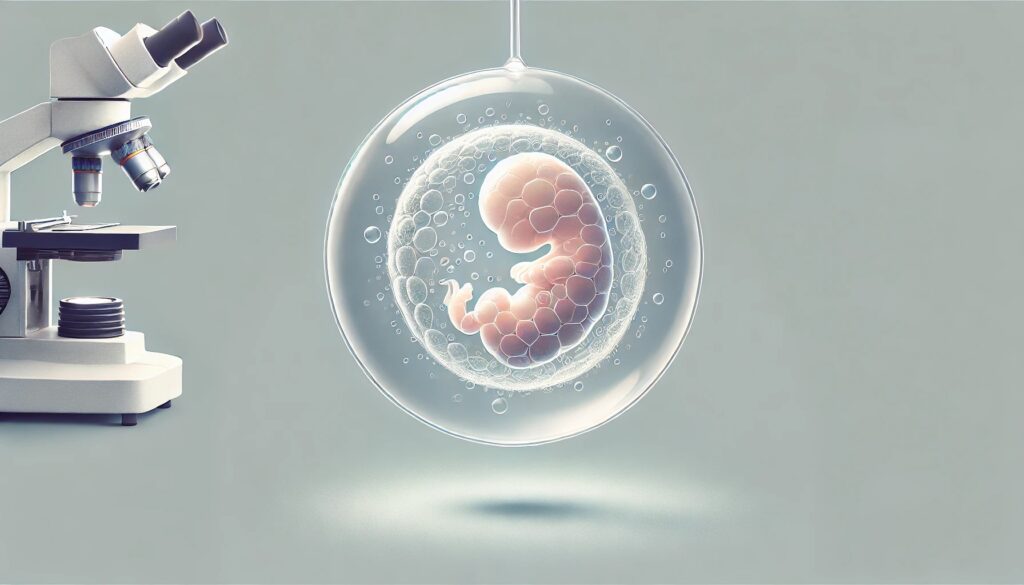As more women consider parenthood later in life, IVF decisions become more complex — and more personal. One of the biggest questions for patients over 35 is whether to transfer one embryo or two.
While it may seem that transferring more embryos increases the chance of success, the reality — especially after 40 — is often the opposite. When managed carefully, single embryo transfer (SET) can improve safety without compromising outcomes.
Why Age Matters in IVF
From age 35 onward, a woman’s egg quality and ovarian reserve begin to decline. This also increases the chance of:
- Chromosomal abnormalities in embryos
- Miscarriage
- Complications such as high blood pressure, gestational diabetes, and preterm birth
These risks become more serious with twin pregnancies. That’s why SET is increasingly recommended, particularly for women in their late 30s and 40s.
Real Case: One Good Embryo Was Enough
A woman in her early 40s with low ovarian reserve underwent IVF. Only two embryos reached the blastocyst stage. After genetic testing (PGT-A), just one was chromosomally normal.
Before the transfer, endometrial health was carefully assessed through specialized tests to personalize progesterone timing and improve implantation chances. The result? A healthy ongoing pregnancy with a single embryo and no complications.
Is Transferring Two Embryos Ever Better?
While the idea of doubling the chances may seem tempting, transferring two embryos increases the risk of twins — and therefore increases pregnancy risks in older patients. If at least one embryo is of good quality, SET is usually the safest and most effective choice. Even if:
- Embryos were frozen on day 3
- Previous IVF cycles failed
- There is a fibroid present or a thin endometrium
What If You’ve Only Got Day-3 Embryos?
Patients who froze embryos on day 3 often wonder about their chances. While it’s impossible to predict whether those embryos will reach the blastocyst stage, about 50% typically do — depending on the underlying egg and sperm quality.
In these cases, growing the embryos to blastocyst before transfer may help identify which has the best potential. Still, even then, transferring just one embryo is considered safer — especially for those over 40.
Real Case: Thin Lining, One Opportunity
A 39-year-old patient had two genetically tested embryos but struggled with thin endometrium due to a previous D&E. To improve outcomes, her treatment included:
- Estradiol
- Low-dose aspirin
- Additional personalized tests and endometrial support
Despite the challenges, the treatment was successful with just one embryo transferred — supporting the idea that quality and preparation matter more than quantity.
Is It Too Late at 43?
Patients in their early-to-mid 40s may face success rates of less than 10% with their own eggs. Egg donation may be discussed, but for those not ready to pursue that option, it’s still possible to try again — with realistic expectations and personalized strategies like dual stimulation to maximize egg retrieval.
Even in these cases, SET remains the safest choice when a good-quality embryo is available.
Why Single Embryo Transfer Is Often the Best Strategy
Here’s what we know:
- The risk of twin pregnancy increases with double embryo transfer, especially after 40.
- Even one chromosomally healthy embryo can lead to a successful pregnancy.
- PGT-A testing helps identify which embryos are most likely to implant.
- Careful endometrial assessment improves outcomes — particularly when only one embryo is available.
- Although rare, embryo splitting can still happen with one embryo, which is another reason to avoid transferring two.
Final Thoughts
Fertility treatment over 40 isn’t just about trying harder — it’s about working smarter. Transferring fewer embryos, when done right, can actually lead to better results.
With the help of personalized testing, careful cycle management, and a focus on safety, one embryo can be all you need.
Table of Contents




